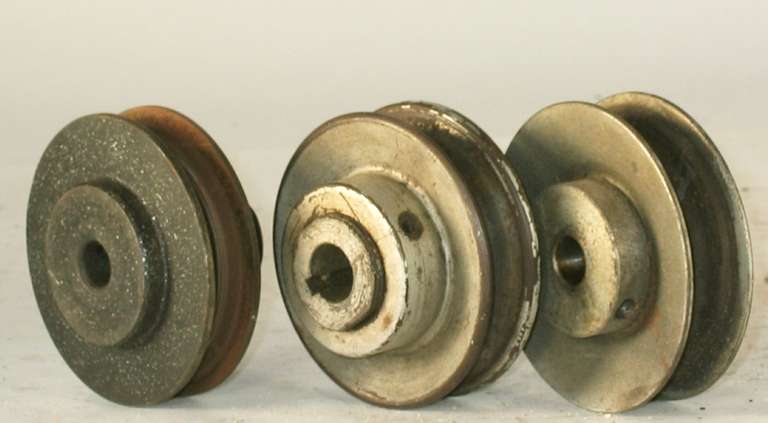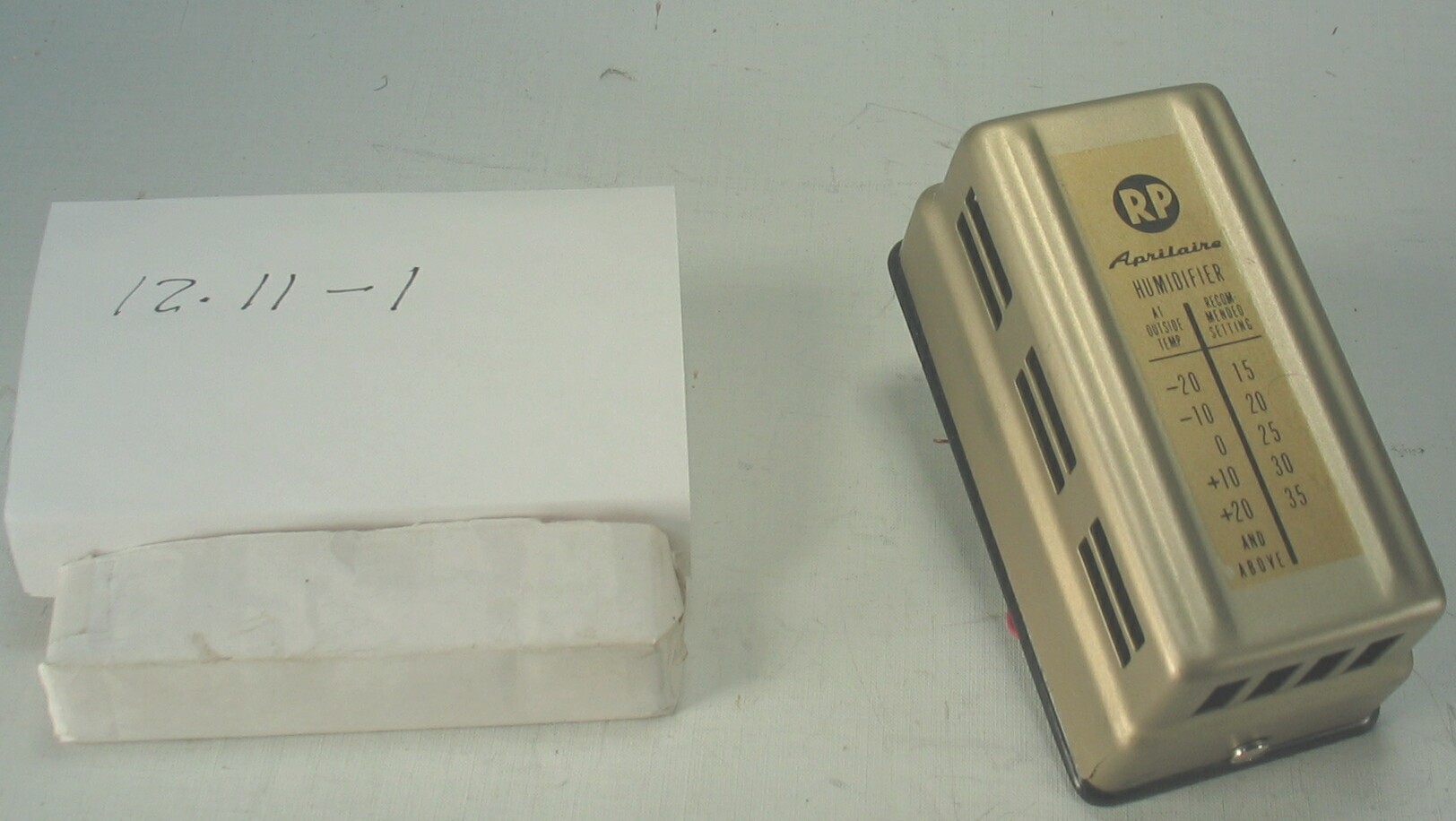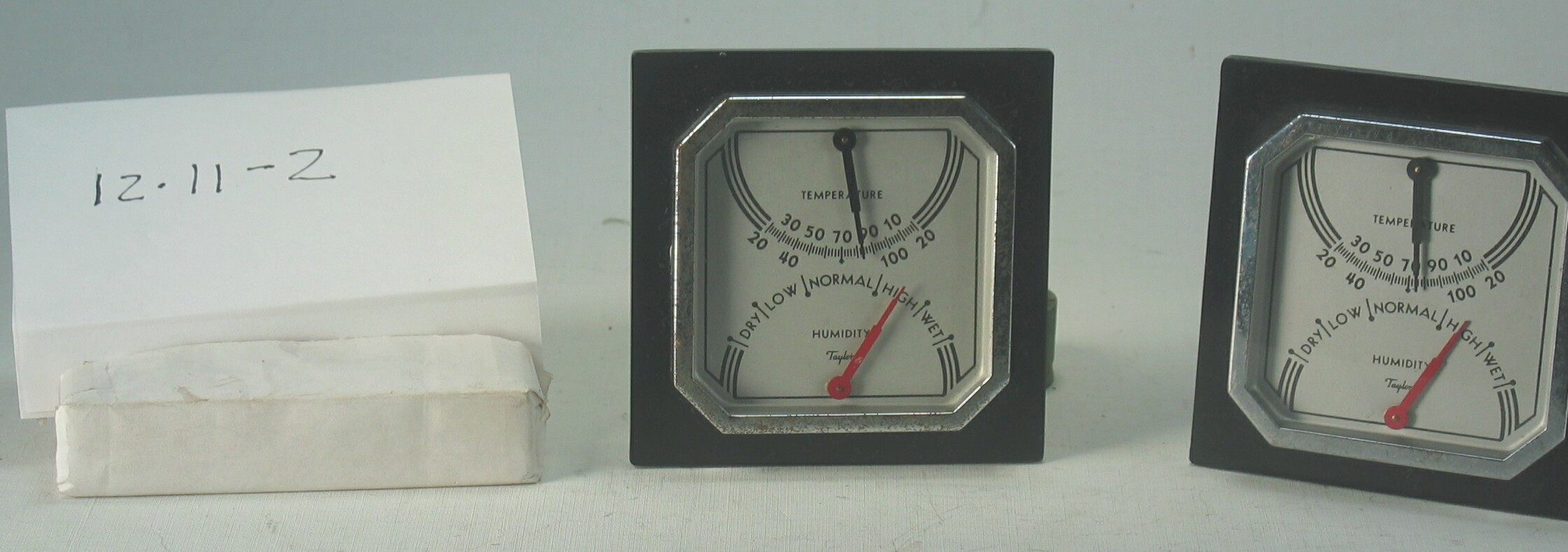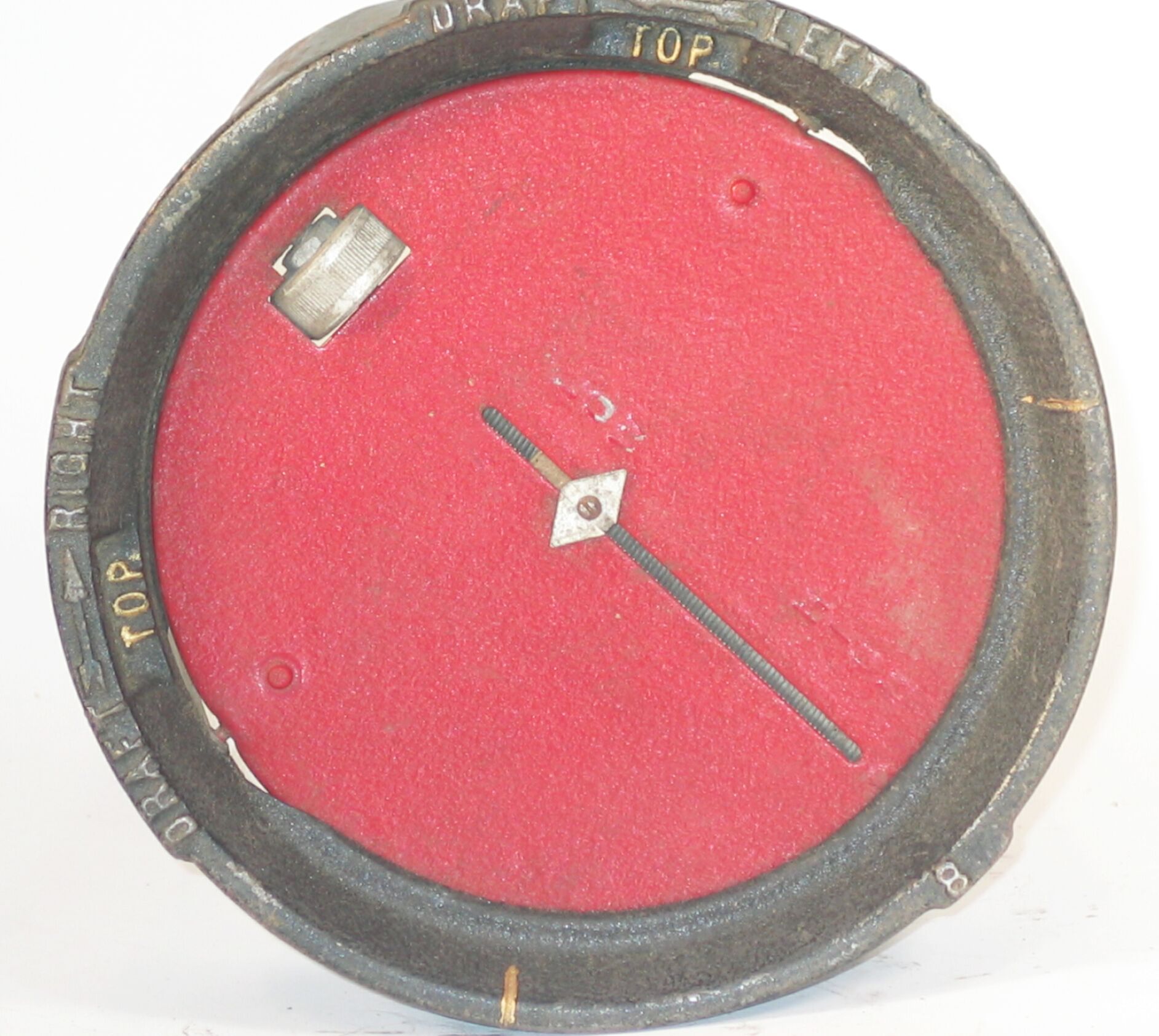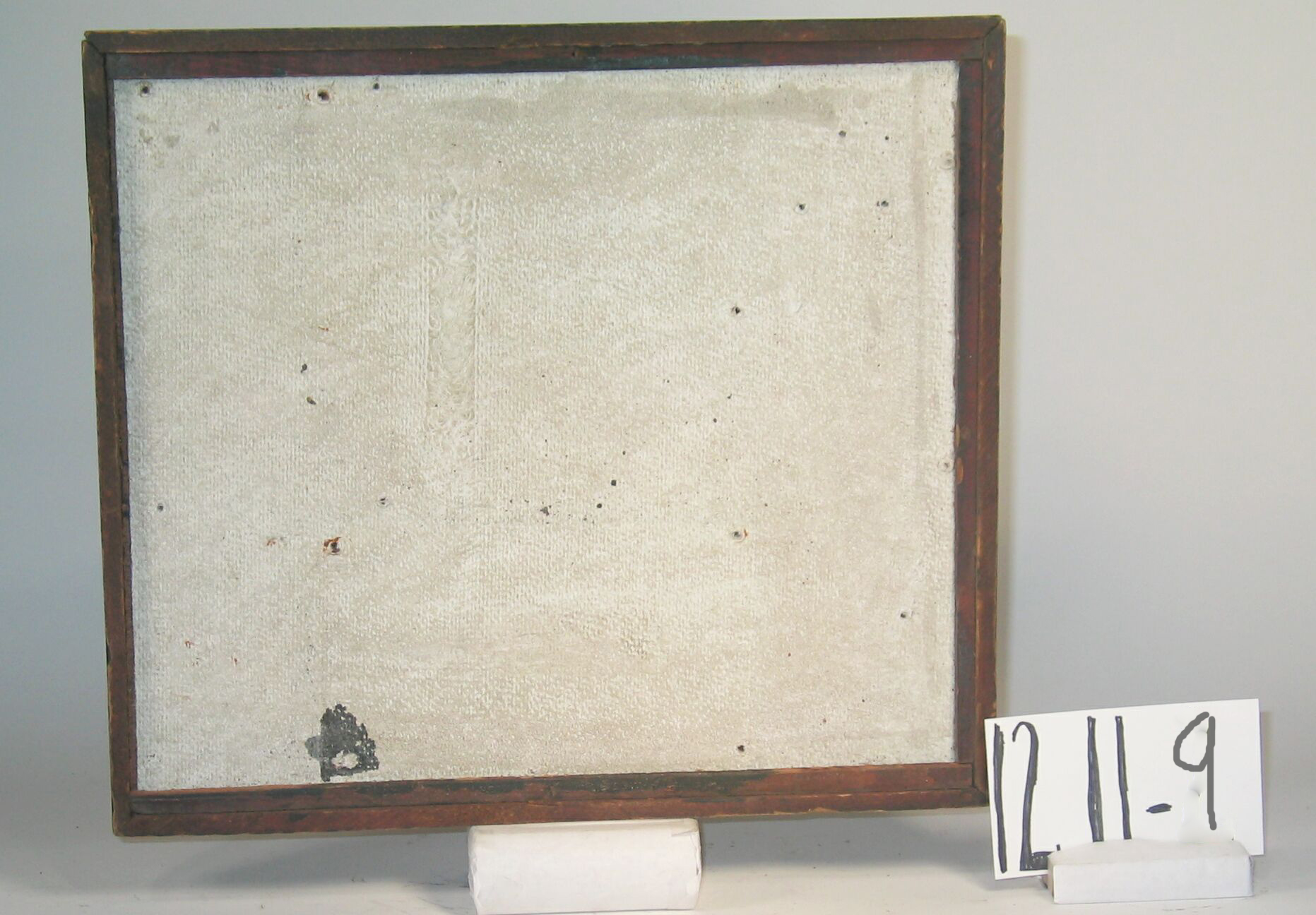12.11-8: 1945 Variable Speed Motor Drive Pulley
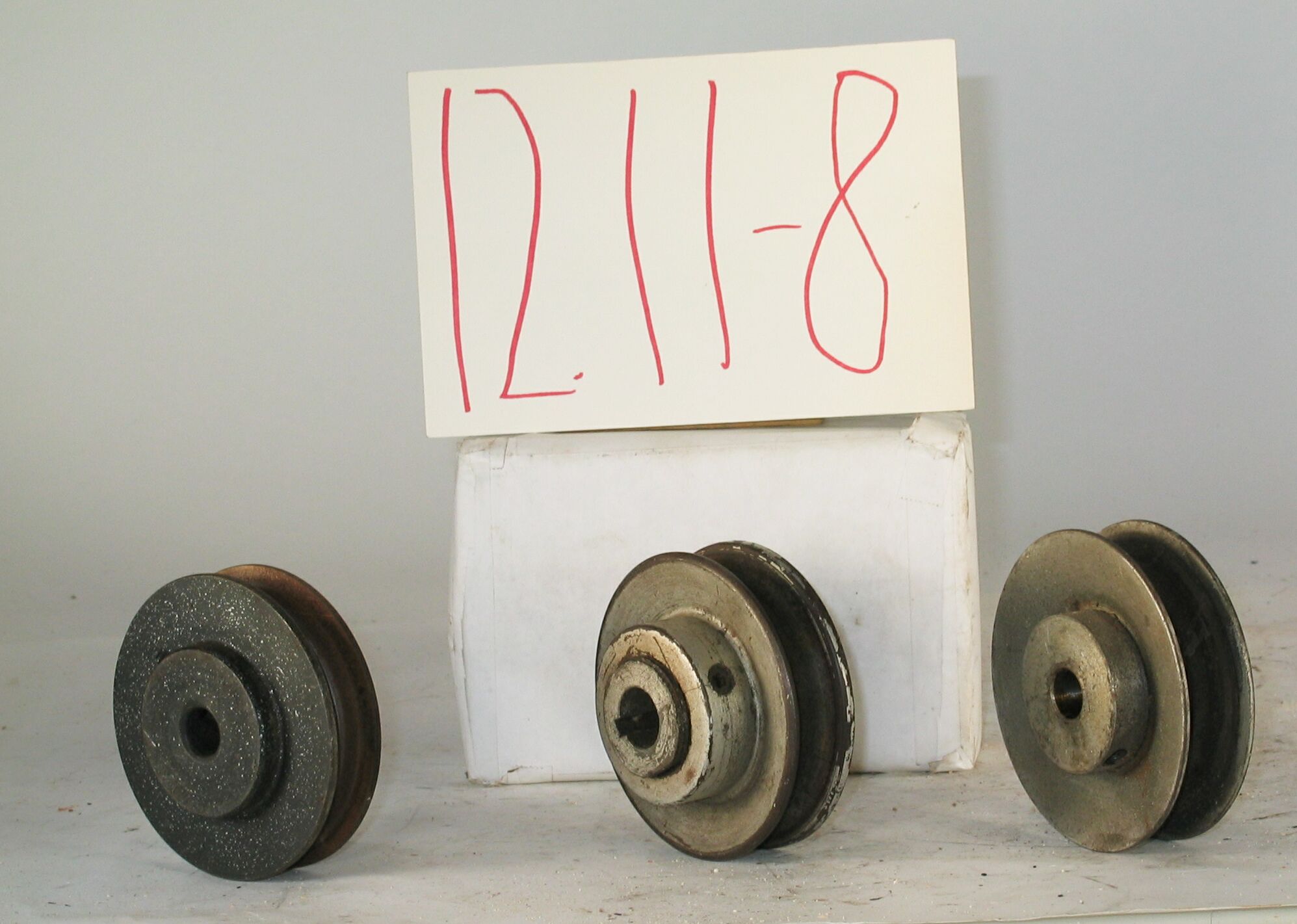
| HHCC Accession No. 2006.123 | HHCC Classification Code: 12.11-8 |
|---|
Description:
The variable speed motor drive pulley would be a hero of the moment, a simple, unobtrusive, ‘low tech’ means for controlling air quantity, temperature, and distribution velocity, on which much of the customer acceptance of forced warm air heating and winter air conditioning sales would rest in Canada, starting in the late pre W.W.II years; set of three pulleys in various design configurations, Circa 1945.
Group:
12.11 Pressure Atomizing Oil Burner Equipment and Systems - Other Components and Parts
Make:
Manufacturer:
Model:
Serial No.:
Size:
3 inch dia. x 2inches each
Weight:
1 to 1.5 lbs. Each
Circa:
1945
Rating:
Exhibit, education, and research quality, illustrating the ‘low tech’ approach to air volume and fan speed control employed through out the latter years of the 20th century on winter air conditioners in Canada
Patent Date/Number:
Provenance:
From York County (York Region) Ontario, once a rich agricultural hinterlands, attracting early settlement in the last years of the 18th century. Located on the north slopes of the Oak Ridges Moraine, within 20 miles of Toronto, the County would also attract early ex-urban development, to be come a wealthy market place for the emerging household and consumer technologies of the early and mid 20th century.
This artifact was discovered in the 1950’s in the used stock of T. H. Oliver, Refrigeration and Electric Sales and Service, Aurora, Ontario, an early worker in the field of agricultural, industrial and consumer technology.
Type and Design:
Fixed pulley sheave in juxtaposition to an adjustable one, the latter set and locked in place on a threaded hub with a set screw
Construction:
Material:
Special Features:
Each showing different signs of use and misuse, telling stories of application, including patterns of ware, over painting and corrosion
Accessories:
Capacities:
Performance Characteristics:
Operation:
Control and Regulation:
Targeted Market Segment:
Consumer Acceptance:
Merchandising:
Market Price:
Technological Significance:
The variable speed motor drive pulley was a ‘low tech’, solution for adjusting fan speed, on belted fan drives, used for balancing air volume circulated by winter air conditioners, starting in the late 1930’s through the introduction of direct drive centrifugal fans employing electrical motor speed adjustment technology. The successful development and wide spread adoption of the winter air conditioner and forced warm air heating in the Canadian, starting in the late pre W.W.II years, brought with it a wide range of engineering and manufacturing challenges, Those related to combustion management and control [see historic artifacts of the period, Group 12.05 to 12.07], automatic temperature and safety control [Group 12.09 to 12.10] and air flow and air quality control [see Group 12.11]. Prior the development of forced air systems, a flow technology and controlwas of little consequence, the focus being on combustion systems and automatic safety control technology. But all that would quickly change as the 1940’s emerged. Air quality and movement throughout the home and the technologies required to control and regulate it, including air quantity, temperature, humidity and draft free air distribution, quickly became a significant factors in ensuring customer comfort, product satisfaction and wide spread market acceptance. The development of centrifugal fan and related drive technology, as well as manufacturing methods needed to help ensure affordability, high performance, efficient and reliable air handling were central factors in the race for market share. It was the early years of fractional horse power electric motor development, suitable for reliable use on automatic home heating equipment, where fail could quickly produce hazardist conditions [see Group 16.00 artifacts]. The motor and drive for centrifugal fan application was a special challenge, met in part through the use of belted drive systems. A system was urgently required to adjust fan speed and thus air volume, temperature and velocity for belted fan applications, in order to ensure comfort conditions, which were largely idiosyncratic, dependent on home configuration and occupancy response ‘ the latter, often on an illusive sense of human comfort and well being. Home owners used to static air environments would be critical of spaces with rapid air change rates and accompanying drafts. The variable speed pulley became the hero of the moment, a simple, unobtrusive, low tech solution, on which much of the customer acceptance of forced warm air heating and winter air conditioning equipment sales would rest in those early development years See also ID # 222 and 223 for companion technologies, targeted on improvements in air quality, humidification for the winter air conditioner in Canada
Industrial Significance:
Practice of balancing forced air heating systems, to ensure customer comfort and satisfaction, evolved on trial and error basis. By the late 1940’s field manuals became available for the guidance of installers and technicians, for the adjustment and balancing of forced air heating systems. Among them were those produced by the National Warm Air Heating and Air conditioning Association, active in the training field in the 1950’s and beyond, see references.
Socio-economic Significance:
Socio-cultural Significance:
Donor:
G. Leslie Oliver, The T. H. Oliver HVACR Collection
HHCC Storage Location:
Tracking:
Bibliographic References:
Howard Furnace Co., Toronto, sales brochure, ‘The South Wind’, undated, circa 1939 Adjusting Air Conditioning Systems, Winter Summer and year Around, for Maximum Comfort, National Warm Air Heating and Air Conditioning Association, Cleveland, 1957 Warm Air Heating and Winter Air Conditioning, John W. Norris, McGraw-Hill, 1950

